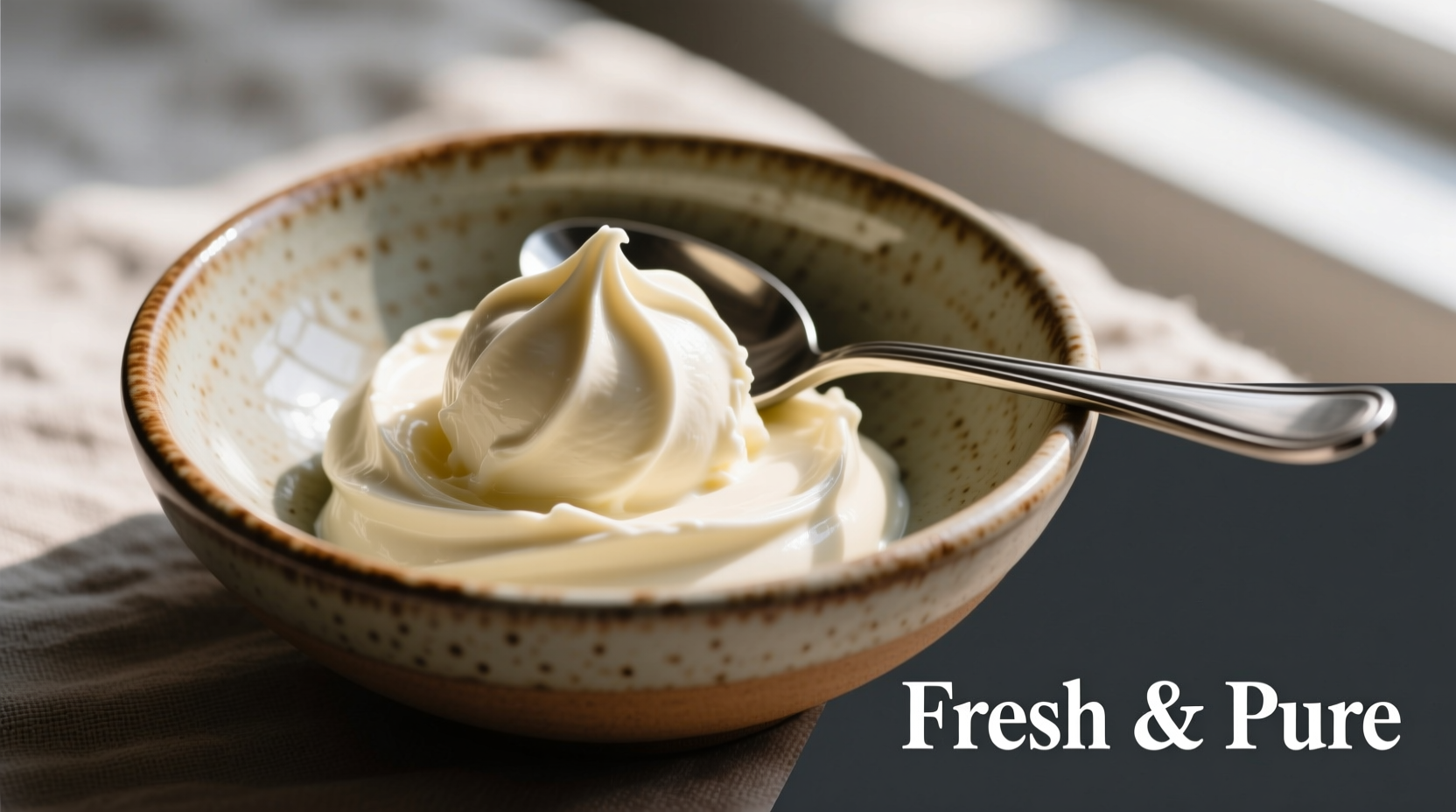Ever wondered what makes mascarpone the secret ingredient in luxurious Italian desserts? This fresh dairy product delivers a uniquely delicate flavor experience that sets it apart from other cheeses. Understanding its taste profile helps you unlock its full culinary potential whether you're making classic tiramisu or experimenting with modern recipes.
Your First Encounter with Mascarpone
When you first taste mascarpone, you'll notice its remarkable smoothness. The texture resembles thick whipped cream that holds its shape without being stiff. Unlike aged cheeses, mascarpone has no sharpness or saltiness—just pure, clean dairy richness. Its flavor sits somewhere between heavy cream and butter, with subtle sweet notes that become more pronounced at room temperature.
Professional chefs describe mascarpone's flavor profile as having three distinct elements:
- Primary note: Fresh cream with buttery richness
- Secondary note: Very mild sweetness (naturally occurring lactose)
- Finish: Clean, neutral aftertaste that doesn't linger
| Cheese Type | Flavor Profile | Texture | Best Culinary Use |
|---|---|---|---|
| Mascarpone | Mild, slightly sweet, buttery | Ultra-smooth, spreadable | Desserts, creamy sauces |
| Cream Cheese | Tangy, slightly salty | Firmer, more elastic | Frostings, cheesecakes |
| Ricotta | Milky, slightly grainy | Grainy, moist | Cannoli, lasagna |
How Texture Shapes the Taste Experience
Mascarpone's luxurious mouthfeel significantly influences how we perceive its flavor. The high fat content (typically 75% butterfat) creates a coating effect on the palate that:
- Amplifies the perception of richness
- Minimizes any potential acidity
- Allows subtle flavor pairings to shine through
Temperature dramatically affects mascarpone's taste experience. Straight from the refrigerator, it tastes more neutral and firm. At room temperature, its natural sweetness becomes more apparent as the fat molecules release flavor compounds. This is why professional chefs always recommend bringing mascarpone to room temperature before using in recipes.

Mascarpone Through the Ages: Traditional Production
Mascarpone's distinctive flavor comes from its centuries-old production method originating in Lombardy, Italy. Unlike most cheeses that use bacterial cultures, traditional mascarpone relies solely on heat and acid to coagulate cream:
- Fresh cream is gently heated to just below boiling
- Lemon juice or tartaric acid is added to thicken the cream
- The mixture is cooled and drained through cheesecloth
- The resulting product is aged for 48-72 hours
This simple process preserves the pure dairy flavor without developing complex aged cheese characteristics. The U.S. Department of Agriculture confirms that authentic mascarpone contains only cream and acidifier, with no added cultures or preservatives that would alter its delicate flavor profile.
Where Mascarpone Shines: Culinary Applications
Mascarpone's neutral yet rich profile makes it incredibly versatile. Understanding its flavor characteristics helps you use it effectively:
Sweet Applications
In desserts, mascarpone serves as a flavor canvas that enhances other ingredients without competing:
- Tiramisu: Absorbs coffee and cocoa flavors while providing creamy structure
- Fruit tarts: Complements berry acidity without overpowering delicate flavors
- Frostings: Creates silky texture without sugar overload
Savory Possibilities
Don't limit mascarpone to sweets—its mild flavor works beautifully in savory dishes:
- Swirled into risotto for creamy richness
- As a base for herb-infused spreads
- Thinned with pasta water for luxurious sauces
Context Boundaries: When Not to Substitute
While mascarpone seems similar to other dairy products, its unique flavor profile means substitutions don't always work. Consider these limitations:
- Not for baking: High moisture content makes it unsuitable as direct cream cheese substitute in baked goods
- Temperature sensitivity: Breaks down if boiled, limiting its use in hot sauces
- Flavor neutrality: Won't provide the tang needed in cheesecake or frosting applications
The University of California's Dairy Research Center notes that mascarpone's pH level (around 4.6) creates a specific chemical environment that affects how it interacts with other ingredients—something to consider when experimenting with substitutions.
Shopping and Storage Guidelines
Maximize mascarpone's flavor potential by selecting and storing it properly:
- Shopping tips: Look for products listing only "cream" and "acidifier" in ingredients
- Freshness test: Should have clean dairy aroma with no sour notes
- Storage: Keep refrigerated below 40°F and consume within 5-7 days of opening
- Freezing: Not recommended as it alters the delicate texture
Remember that mascarpone's flavor deteriorates quickly once opened. The National Dairy Council recommends using an airtight container and pressing plastic wrap directly on the surface to minimize oxidation that can create off-flavors.
Perfect Pairings for Mascarpone
Understanding what complements mascarpone's flavor profile helps create balanced dishes:
- Fruit: Berries, stone fruits, and citrus cut through richness
- Alcohol: Marsala wine enhances its Italian heritage in desserts
- Spices: Vanilla, cinnamon, and nutmeg accentuate natural sweetness
- Texture contrasts: Crumbled cookies or nuts provide counterpoint to smoothness
Chef Sophie Dubois explains: "Mascarpone's magic lies in its ability to transform simple ingredients into something extraordinary. Its flavor isn't dominant but serves as the perfect supporting actor that makes every other ingredient shine."











 浙公网安备
33010002000092号
浙公网安备
33010002000092号 浙B2-20120091-4
浙B2-20120091-4